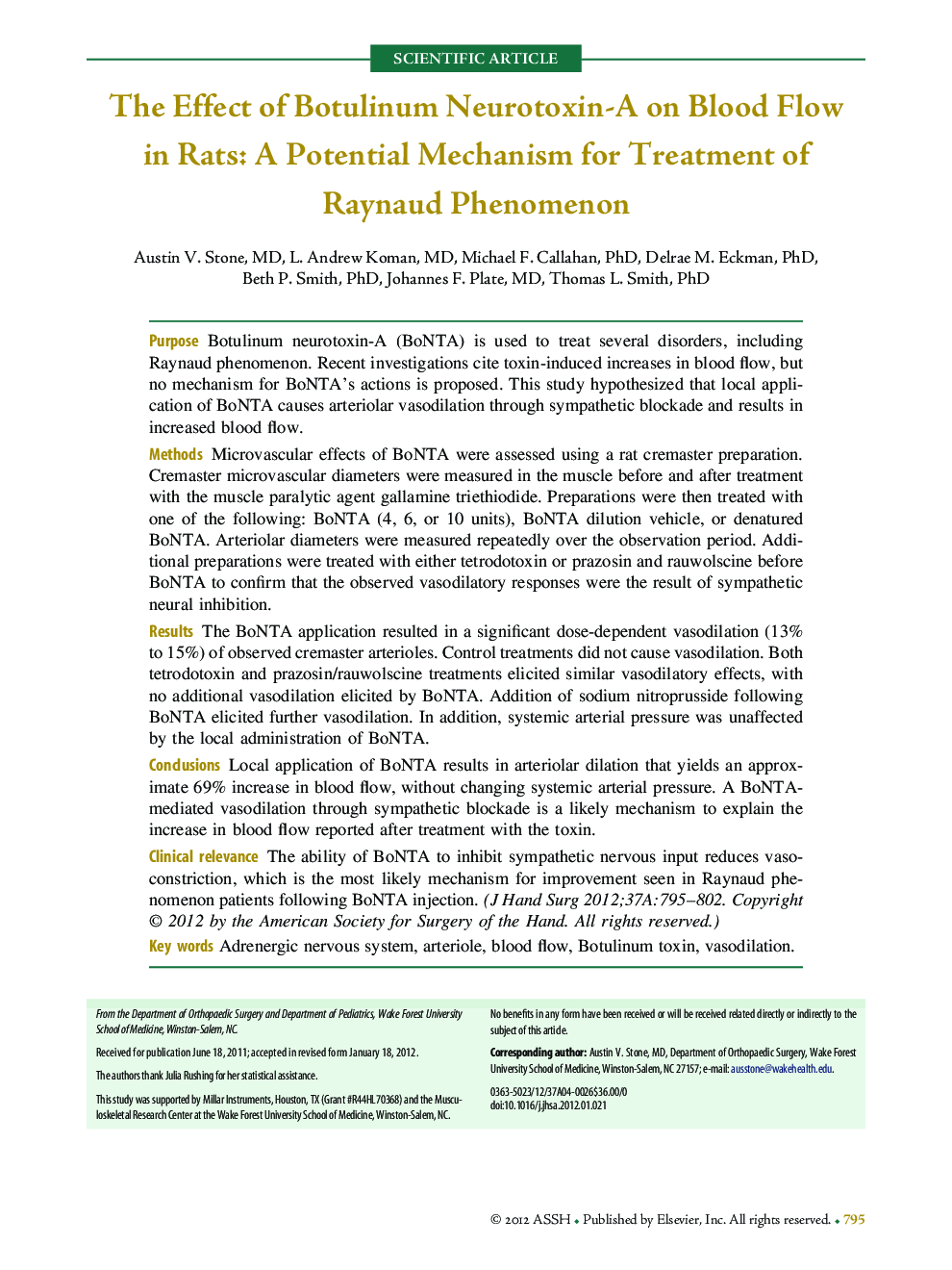| Article ID | Journal | Published Year | Pages | File Type |
|---|---|---|---|---|
| 4069225 | The Journal of Hand Surgery | 2012 | 8 Pages |
PurposeBotulinum neurotoxin-A (BoNTA) is used to treat several disorders, including Raynaud phenomenon. Recent investigations cite toxin-induced increases in blood flow, but no mechanism for BoNTA's actions is proposed. This study hypothesized that local application of BoNTA causes arteriolar vasodilation through sympathetic blockade and results in increased blood flow.MethodsMicrovascular effects of BoNTA were assessed using a rat cremaster preparation. Cremaster microvascular diameters were measured in the muscle before and after treatment with the muscle paralytic agent gallamine triethiodide. Preparations were then treated with one of the following: BoNTA (4, 6, or 10 units), BoNTA dilution vehicle, or denatured BoNTA. Arteriolar diameters were measured repeatedly over the observation period. Additional preparations were treated with either tetrodotoxin or prazosin and rauwolscine before BoNTA to confirm that the observed vasodilatory responses were the result of sympathetic neural inhibition.ResultsThe BoNTA application resulted in a significant dose-dependent vasodilation (13% to 15%) of observed cremaster arterioles. Control treatments did not cause vasodilation. Both tetrodotoxin and prazosin/rauwolscine treatments elicited similar vasodilatory effects, with no additional vasodilation elicited by BoNTA. Addition of sodium nitroprusside following BoNTA elicited further vasodilation. In addition, systemic arterial pressure was unaffected by the local administration of BoNTA.ConclusionsLocal application of BoNTA results in arteriolar dilation that yields an approximate 69% increase in blood flow, without changing systemic arterial pressure. A BoNTA-mediated vasodilation through sympathetic blockade is a likely mechanism to explain the increase in blood flow reported after treatment with the toxin.Clinical relevanceThe ability of BoNTA to inhibit sympathetic nervous input reduces vasoconstriction, which is the most likely mechanism for improvement seen in Raynaud phenomenon patients following BoNTA injection.
